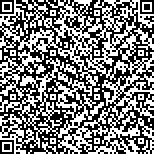下载中心
优秀审稿专家
优秀论文
相关链接
摘要

针对高分五号可见短波红外高光谱相机AHSI (visible-shortwave infrared Advanced HyperSpectral Imager)可见光波段存在的薄云干扰,本文提出了一种联合统计信息与散射模型的校正方法。利用AHSI影像邻近波段间地表与云雾辐射的统计差异,实现对不同场景下相对薄云辐射
Thin clouds widely exist in the visible bands of GaoFen-5 visible-shortwave infrared Advanced HyperSpectral Imager (AHSI),thereby degrading the data quality. In this study, a thin cloud correction method based on statistical information and scattering model was proposed to correct the clouds and restore the surface information with high fidelity. The proposed method combines the statistical information between two adjacent visible bands and the atmospheric scattering model among visible bands. Two steps are included, that is estimating the Relative Cloud Radiance (RCR) and calculating the absolute radiance for different visible bands. For a pair of adjacent visible bands, the ground radiance of clear pixels is highly and linearly correlated. However, the linear relationship deviates when the pixel is contaminated by clouds. The stronger the cloud contamination is, the larger the deviation will be. Therefore, the RCR can be accurately estimated using the two adjacent visible bands of the AHSI. Relying on the RCR, different strategies were utilized to calculate the absolute cloud radiance for different visible bands in accordance with their scatter properties. A hierarchical dark object strategy was used to calculate the cloud radiance for the bands in blue and green spectral regions. A scattering model was adopted for the bands in red spectral region. The cloud-free results can be obtained by subtracting the band-varied cloud radiance from cloudy images when the absolute cloud radiance of different visible bands were calculated. Synthetic and real experiments were conducted to validate the effectiveness of the proposed method through qualitative and quantitative analyses. In the synthetic experiments, the cloud contamination in visible bands can be completely cleared , and the results are closest to the ground truth compared with the two other methods. The values of root-mean-square error, mean absolute error, and spectral angle values are only 1.9891, 1.6822, and 0.4901,respectively, which are smaller than those of the compared methods. In the real experiments, the thin clouds in various scenes can be completely corrected, whereas the spectral characteristics of the clear regions are relatively maintained. The scores of the Q-index, structural similarity index, and universal quality index showed that the proposed method achieve the best performance in most cases compared with the two other methods. All the comparisons indicated the proposed method has superior cloud correction ability for different scenes. This study proposed a thin cloud correction method for the GF-5 AHSI visible data. The highly linear correlation between the two adjacent visible bands can be used to accurately estimate the RCR. Various strategies were utilized to calculate cloud radiance in accordance with the scattering properties of different bands, wherea hierarchical dark object strategy was used for the bands in blue and green spectral regions, whereas a scattering model strategy was used for the bands in red spectral region. The thin clouds in the visible bands of AHSI data can be completely corrected by combining the statistical information and scattering model. For various scenes, the results achieve the best performance compared with the compared methods in terms ofqualitative and quantitative aspects.

